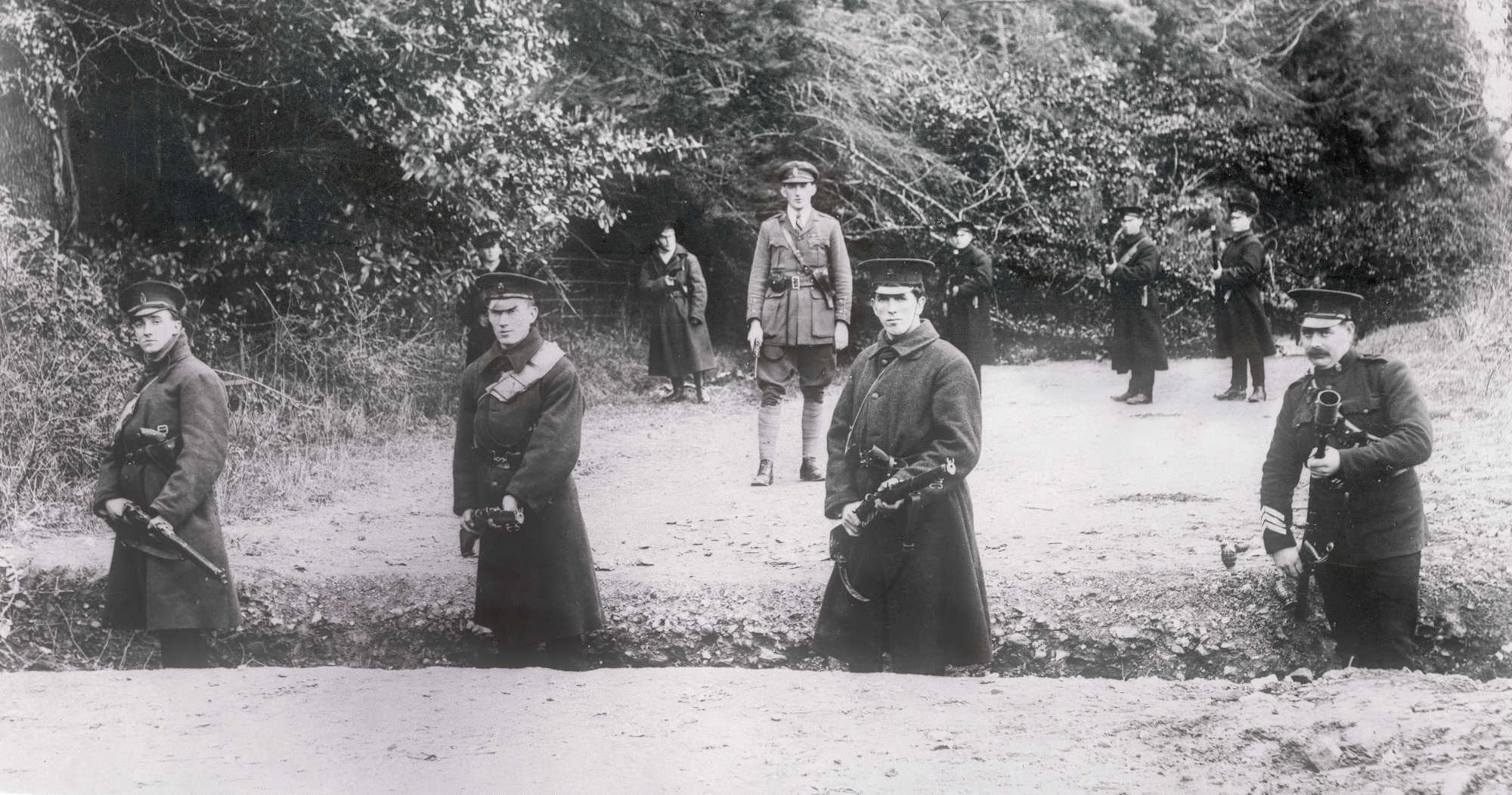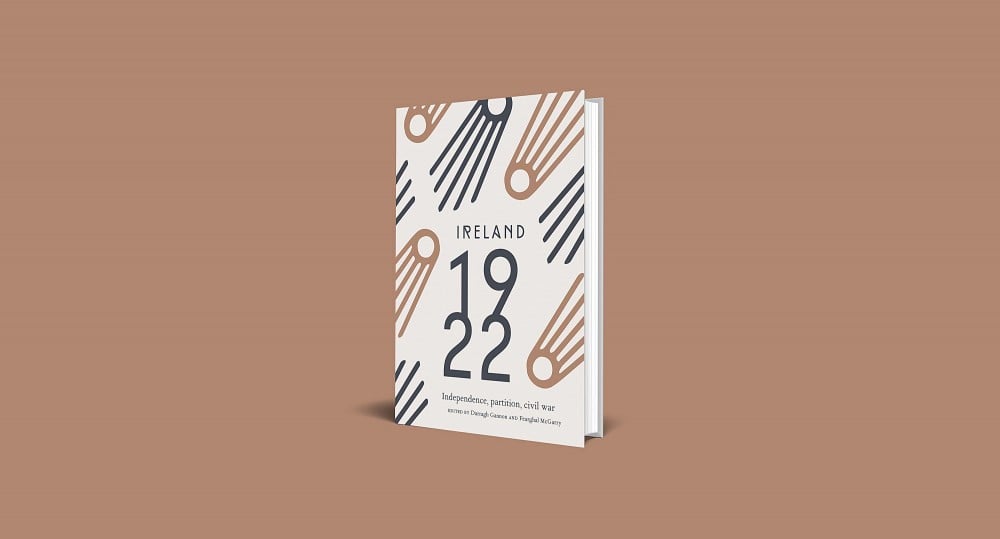3 March 1922: Closing Border Roads
Friction on the Frontier
By Peter Leary
At 11 p.m. on Friday, 3 March 1922, a party of B-Specials (a section of the Ulster Special Constabulary) opened a trench across the road at Gortineddan—a townland between Derrylin in County Fermanagh and Ballyconnell, County Cavan—severing motor access between Northern Ireland and the south. It was ‘filled’ the following day by local people but was reopened by A-Specials that night.¹ This was only the beginning. Over the course of that weekend, and in the weeks that followed, numerous attempts to seal the border were reported. Saturday saw three roads ‘cut’ near Clones, County Monaghan, blocking off the market town and important railway junction, both from Newtownbutler in Fermanagh and from access to the Cavan villages of Redhills and Belturbet, via routes that passed through Northern Ireland on the way. On Monday, 6 March two bridges near Swanlinbar, County Cavan—one leading to Derrylin, the other to Enniskillen—were destroyed by a combined force of A and B Specials. When the latter bridge was partially repaired by local farmers ‘to get their stock and goods across’, a group of A-Specials tore it down again.
On Wednesday two more trenches were dug ‘in certain districts in Fermanagh, adjoining Clones, while in other instances existing trenches cut across the roads were even widened.’² Elsewhere, more rudimentary barriers—using stones and felled trees—were erected. A fortnight later, on Tuesday, 21 March, ‘a large force of special constabulary (principally “B” men)…commandeered picks, shovels, crowbars, and barrows’ from the stores of the Derry Corporation ‘for which they gave a receipt’. These ‘articles were then placed in Crossley tenders’ and driven to the Donegal border where trenches were dug across the thoroughfares of ‘numerous by-roads at points where the counties meet’.³ ‘Road contractors near the County Cavan border who went to fill in opened trenches were warned by specials not to do so, otherwise they would be shot.’⁴
Barricaded roads were not at all unusual in early 1920s-Ireland as rival parties of combatants sought to curtail the movements of their enemies or facilitate an ambush. What set these border blockages apart was that they reified political partition. In some areas—notably around Clones and Swanlinbar—efforts to keep the border closed would continue for more than a year, even after the customs barrier was in place. As such, March 1922 was a significant step towards the imposition of a new, bounded, spatiality upon the older landscape of conflict and division, and the closure of these crossings one of the first ways in which partition was experienced.
Theretofore the frontier had been blurry on the ground. Political and martial mobilisations throughout the region traditionally drew on connections and concentrations of communal strength that were scattered across county lines. In Cavan, Donegal and Monaghan, enrolment in the pre-First-World-War Ulster Volunteers had been greater, relative to the Protestant population, than it had been in more solidly-unionist Antrim or Down.⁵ When the Ulster Special Constabulary (with its full-time A, part-time B, and reserve C-Special classes) was formed, from November 1920 onwards, it attracted men from both sides of the border. A year before the roads were closed, in March 1921, a substantial group of militant Monaghan loyalists had even gone so far as to invade Northern Ireland, helping to sack the nationalist village of Roslea, County Fermanagh; in August thesame year, Reverend Burns, rector of Drum, also in County Monaghan, predicted confidently that ‘the six counties which excluded them would yet invite them back’.⁶
Despite the signing of the Treaty in December 2021, the future status of the border still seemed uncertain in the first months of 1922. On the one hand, the agreement itself introduced fresh doubt owing to its Article 12 provision for a boundary commission that could potentially redraw the frontier line. On the other hand, conflict escalated on and around the border. Responding to the imprisonment of republicans in the north, the night of 7 February saw 44 prominent unionists—among them Orange activists and security personnel—kidnapped by the IRA and taken across the border. Even this, however, was overshadowed a few days later by the ‘Clones Affray’, a chance encounter on 11 February 1922 between IRA members and an armed party of nineteen uniformed Special Constabulary who were travelling by train from Belfast to Enniskillen, a journey that required them to change trains at Clones. The ensuing gunfight claimed the lives of four Special Constabulary members and the local IRA commandant, with many others wounded.⁷ Supported by the British government, the northern authorities flooded the border region with what Winston Churchill described as ‘overwhelming forces’, and reports of Catholic families fleeing the north and Protestants likewise abandoning the south increased.⁸
Nevertheless, the road closures came as a surprise and produced confusion. In the week following the first wave of trenching, the nationalist Fermanagh Herald reported that it was ‘stated in some quarters that the trenching of the border roads…was not authorised’. Similarly, the unionist Belfast News-Letter cast doubt upon the claims of the ‘Dublin Nationalist papers…that the barricades were erected by order of the Northern Government’ but later suggested that the ‘Loyalists of the Border districts’ had trenched additional roads ‘to prevent further raids on Northern territory’. To the Irish Independent’s ‘special representative at Clones’, it appeared that ‘the directors of Belfast policy’ had begun ‘to attach great importance to a definite line about the Six Counties’.⁹
Social life and trade on both sides was affected. According to the Freeman’s Journal, by early March ‘Roslea fair was completely shunned by both buyers and sellers’ because of ‘the timidity of people to go there as well as the fact that no person could travel on account of torn or blown up bridges and gaping trenches’. Clones market too was ‘practically boycotted by all Unionists’, who had set up a rival market ‘within the Northern area’.¹⁰ As time went on, merchants at Swanlinbar, in the habit of trading via the railway line at Florencecourt, switched to using the narrow-gauge train at Bawnboy Road in Cavan despite less favourable rates.
As with later periods of conflict, however, the border was not completely blockaded. In June 1922 the Northern Ireland Cabinet considered but did not implement a proposal from extremist military advisor Major-General Sir Arthur Solly-Flood ‘to prohibit all ingress and egress’, even though in practice this was already happening ‘to a considerable extent’.¹¹ In addition to repeated attempts to physically reopen the crossings, creative efforts were made to circumvent the barriers. Goods from Enniskillen and Fermanagh milk bound for the separating station at Swanlinbar came by lorry as far as the broken bridge, where they were ‘transhipped’ to awaiting vehicles on the other side. At some places alternative back roads were used for a time and, at the Annie Bridge, a ford was built to bring turf across the river until it too was blocked with barbed wire.¹²
For a century the Irish border has been contested, not merely in the realms of politics and ideology, but also in the everyday struggles of many within border communities and beyond them to preserve its permeability when faced with diverse attempts to impose it as a barrier. In significant ways, that to and fro began in March 1922 with trenches dug in country roads and with local people filling them in.
Extracted from Ireland 1922 edited by Darragh Gannon and Fearghal McGarry and published by the Royal Irish Academy with support from the Department of Tourism, Culture, Arts, Gaeltacht, Sport and Media under the Decade of Centenaries 2012-2023 programme. Click here to view more articles in this series, or click the image below to visit the RIA website for more information.






















